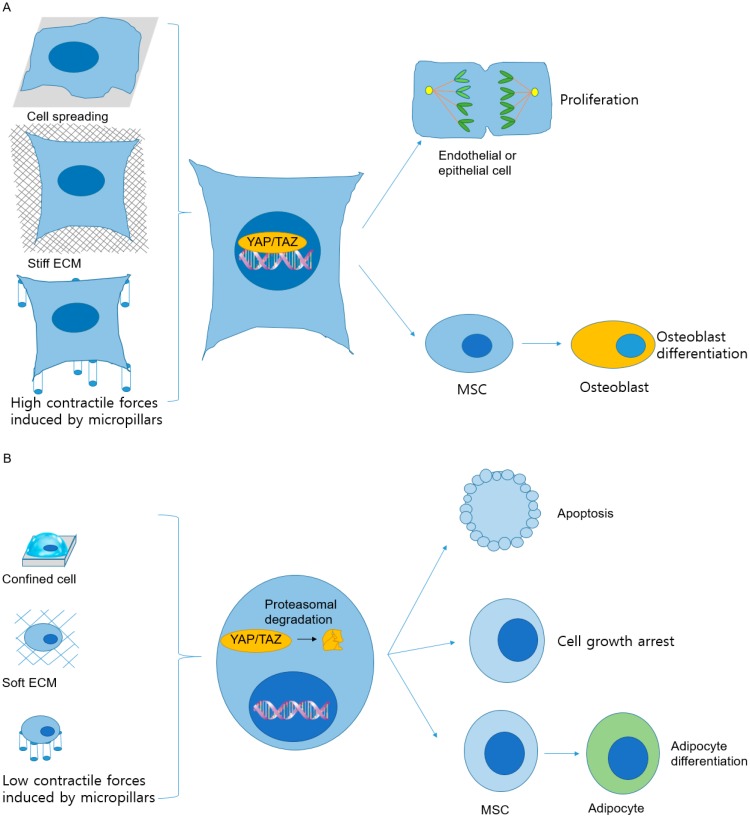Figure 6.
Mechanical stimuli induce YAP/TAZ translocation into the nucleus and determine cell fates [113,147]. (A) The translocation of the transcriptional regulators, YAP and TAZ, into the nucleus occurs under mechanical conditions that induce strong intracellular resistive forces and activate YAP and TAZ. In cells spread on an extensive adhesive area, cultured on solid extracellular matrices (ECMs), or stretched between micropillars, YAP and TAZ translocate into the nucleus and become active. Under these conditions, these transcriptional regulators are required for endothelial or epithelial cell proliferation and differentiation of MSCs to osteoblasts. (B) The inactivation and relocalization of YAP and TAZ in cytoplasm followed by proteasomal degradation of YAP and TAZ occur when the cells are confined on small adhesive areas or cultured on soft ECMs or on top of micropillars. The degradation results in weak contractile forces. Degradation of YAP and TAZ causes cell apoptosis, growth arrest, or differentiation of MSCs into adipocytes. Furthermore, the degradation and nuclear localization of YAP and TAZ are affected by ECM properties such as stiffness, area, and contractile force.

